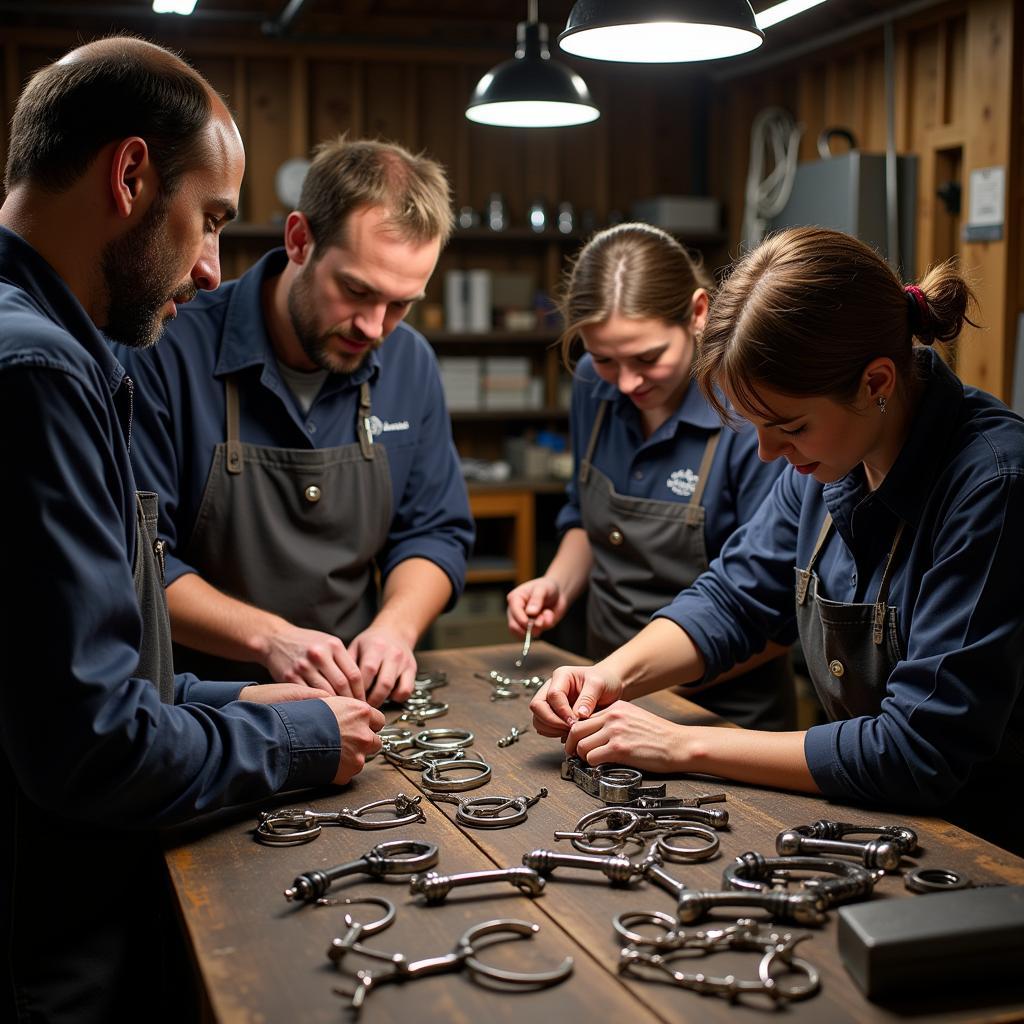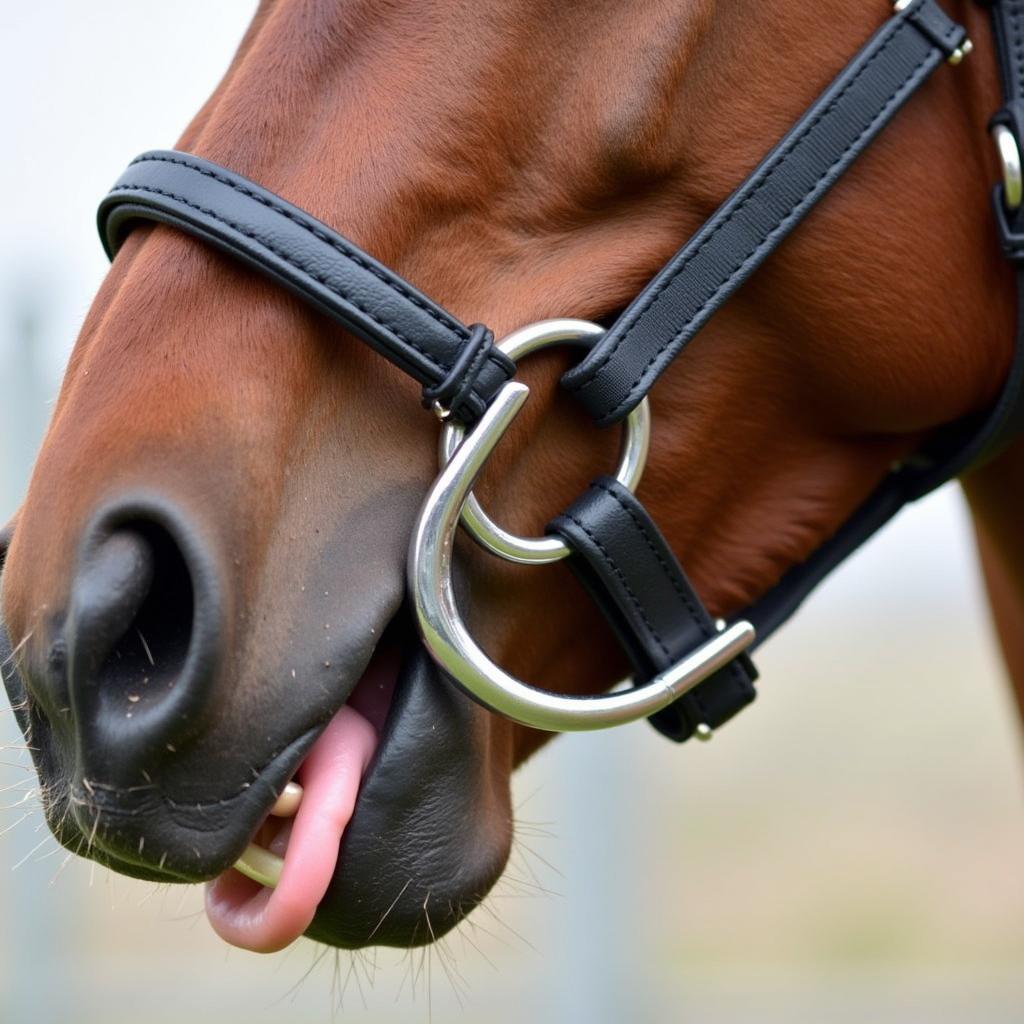Stubben Horse Bits are renowned for their quality and craftsmanship. Choosing the right bit is crucial for your horse’s comfort and performance, and understanding the nuances of Stubben bits can significantly impact your riding experience. This guide will delve into the world of Stubben horse bits, exploring their various types, materials, and how to select the perfect one for your equine partner.
The Legacy of Stubben Horse Bits
Stubben has a long and respected history in the equestrian world. Their commitment to quality and innovation has made them a leading brand in horse bits. From the classic D-ring to the more specialized gag bits, Stubben offers a wide range for various disciplines and riding styles. Understanding this legacy helps appreciate the craftsmanship and attention to detail that goes into each Stubben bit.
 Stubben Factory Tour
Stubben Factory Tour
Types of Stubben Horse Bits: Finding the Right Fit
Stubben offers a diverse range of bits to cater to the individual needs of horses and riders. Some popular types include:
- Snaffle Bits: These are generally considered milder bits, applying direct pressure to the tongue, bars, and corners of the mouth. Stubben offers various snaffle variations, including loose ring, eggbutt, and D-ring, each with its own subtle effect.
- Curb Bits: Curb bits use leverage to exert pressure on the poll, chin groove, and bars of the mouth. They are often used in Western riding and disciplines requiring more collection and control. Stubben’s curb bits are known for their precise and balanced action.
- Pelham Bits: Pelham bits combine elements of both snaffle and curb bits, offering more control than a snaffle while remaining less severe than a full curb. Stubben offers Pelham bits with various cheekpiece designs to fine-tune the level of leverage.
- Gag Bits: Gag bits use leverage and upward action to encourage head elevation and flexion. Stubben offers gag bits with different ring configurations to suit various disciplines and training needs.
Materials and Craftsmanship: The Stubben Difference
Stubben utilizes high-quality materials in their bit construction, ensuring durability and comfort for the horse. Common materials include:
- Sweet Iron: This material rusts slightly, encouraging salivation and acceptance of the bit.
- Stainless Steel: Known for its strength and resistance to corrosion, stainless steel is a popular choice for its longevity.
- Aurigan: A specialized copper alloy believed to promote relaxation and acceptance of the bit.
Choosing the Right Stubben Bit for Your Horse
Selecting the appropriate bit is a crucial decision that should consider your horse’s temperament, training level, and the specific discipline.
- Consider Your Horse’s Mouth Conformation: Horses with fleshy tongues or low palates may require different bit designs than those with thinner tongues or higher palates.
- Consult with a Trainer or Experienced Equestrian: They can provide valuable insights and guidance in selecting the most suitable bit for your horse’s needs.
- Start with a Simpler Bit: Begin with a milder bit and gradually progress to more complex designs as your horse’s training advances.
 Horse Wearing a Stubben Bit
Horse Wearing a Stubben Bit
Conclusion: Equipping Your Horse with the Best
Choosing the right Stubben horse bit is essential for a harmonious partnership between horse and rider. By understanding the various types, materials, and fitting considerations, you can ensure your horse’s comfort and enhance your riding experience. Stubben’s dedication to quality and craftsmanship makes their bits a reliable choice for equestrians of all levels.
FAQ
- What is the most common type of Stubben bit? Snaffle bits are generally the most common type, particularly for beginners.
- How do I know if a Stubben bit fits my horse correctly? A properly fitted bit should lie comfortably in the horse’s mouth without pinching or causing excessive pressure.
- What are the benefits of using a Sweet Iron Stubben bit? Sweet iron encourages salivation, which can help the horse accept the bit more readily.
- How often should I clean my Stubben bit? Bits should be cleaned after every ride to remove saliva and debris.
- Can I use a Stubben bit for any discipline? Stubben offers bits for a wide range of disciplines, from dressage to western riding.
- Where can I purchase authentic Stubben horse bits? Authorized Stubben retailers offer a wide selection of genuine Stubben products.
- What if my horse doesn’t respond well to a particular Stubben bit? Consult with a trainer or experienced equestrian to determine if a different bit is necessary.
Common Scenarios and Questions
- Scenario: My horse is leaning on the bit. Question: What type of Stubben bit might help address this issue?
- Scenario: My horse is tossing its head excessively. Question: Could the bit be the problem, and what Stubben bit alternatives might be suitable?
- Scenario: I’m transitioning my horse to a new discipline. Question: What type of Stubben bit is recommended for this specific discipline?
Further Exploration on Justus Horses USA
Explore our website for more articles on horse care, bitting, and riding equipment. We also have a blog post on “Choosing the Right Bit for Your Horse” and a guide on “Understanding Horse Bit Materials”.
Contact us for any assistance. Phone: 0772127271, Email: [email protected]. Visit us at QGM2+WX2, Vị Trung, Vị Thuỷ, Hậu Giang, Việt Nam. We have a 24/7 customer service team.